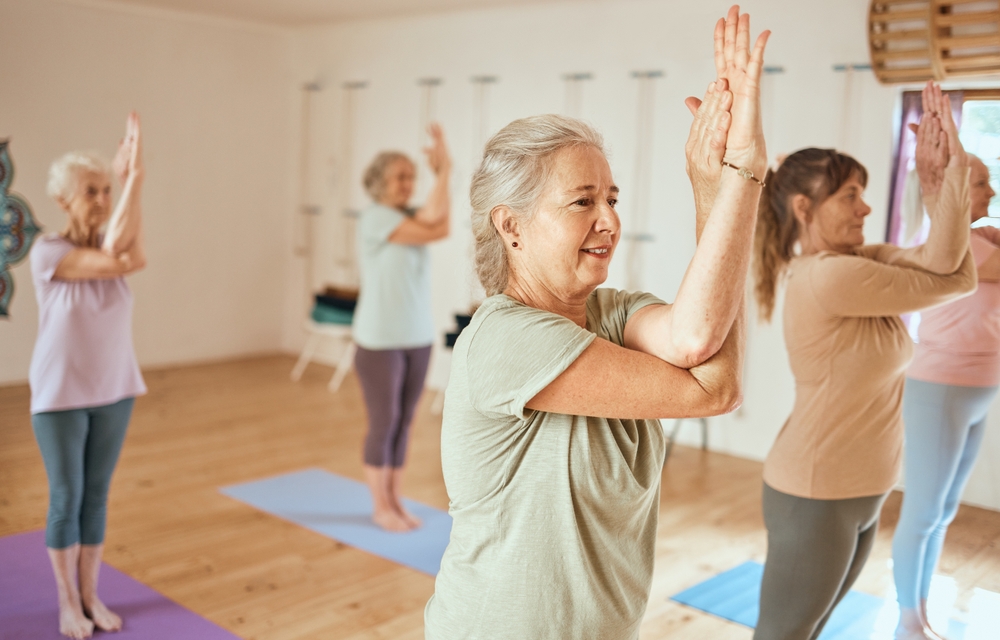3 Osteoporosis Exercises That Help Maintain Vitality And Easy Movement in Seniors
Living with osteoporosis doesn't mean limiting your physical activities. In fact, the right exercises can help strengthen bones, improve balance, and maintain mobility in seniors affected by this condition. Understanding and practicing appropriate exercises is crucial for managing osteoporosis while staying active and independent in daily life.

Why is Exercise Essential for Osteoporosis Management?
Exercise plays a crucial role in managing osteoporosis, particularly for seniors. Regular physical activity helps maintain bone density, improve balance, and strengthen muscles, all of which are vital for reducing the risk of falls and fractures. Moreover, exercise contributes to overall health, enhancing cardiovascular fitness, flexibility, and mood. For seniors with osteoporosis, a well-rounded exercise routine can significantly improve their ability to perform daily activities and maintain independence.
What Are the Best Weight-Bearing Exercises for Seniors?
Weight-bearing exercises are fundamental in osteoporosis management as they stimulate bone formation and help maintain bone density. For seniors, low-impact weight-bearing exercises are often the safest and most effective option. Walking is an excellent example of a low-impact, weight-bearing exercise that most seniors can easily incorporate into their daily routine. Other beneficial activities include low-impact aerobics, using elliptical machines, or dancing. These exercises not only support bone health but also improve cardiovascular fitness and overall mobility.
How Can Balance Exercises Prevent Falls?
Balance exercises are crucial for seniors with osteoporosis as they help prevent falls, which can lead to serious fractures. Simple balance exercises can be performed daily to improve stability and coordination. Tai Chi, for instance, is an excellent practice that combines gentle movements with mindfulness, enhancing balance and reducing fall risk. Other effective balance exercises include standing on one foot (while holding onto a chair for support), heel-to-toe walking, and gentle yoga poses designed for seniors. Regular practice of these exercises can significantly improve a senior’s confidence in movement and reduce the fear of falling.
What Strength Training Exercises Are Safe for Osteoporosis?
Strength training is essential for building and maintaining muscle mass, which in turn supports bone health and improves overall functionality. For seniors with osteoporosis, it’s important to focus on exercises that are safe and effective. Resistance band exercises are an excellent option, allowing for controlled movements that target specific muscle groups without putting excessive strain on joints. Body weight exercises, such as modified push-ups against a wall, gentle squats, and leg raises, can also be beneficial. It’s crucial to start with light resistance and gradually increase as strength improves, always maintaining proper form to avoid injury.
When Should You Modify Your Exercise Routine?
While exercise is beneficial for managing osteoporosis, it’s important for seniors to know when and how to modify their routines. If experiencing pain during or after exercise, it may be necessary to adjust the intensity or type of activity. Seniors should also be cautious of high-impact activities or exercises that involve twisting motions, as these can increase the risk of fractures. It’s advisable to consult with a healthcare provider or a physical therapist specializing in osteoporosis before starting a new exercise program. They can provide personalized recommendations based on individual health status, bone density, and overall fitness level.
Regular exercise is a powerful tool in managing osteoporosis and maintaining vitality in seniors. By incorporating weight-bearing activities, balance exercises, and safe strength training into their routines, seniors can improve their bone health, reduce fall risk, and enhance their overall quality of life. Remember, consistency is key, and even small amounts of daily exercise can lead to significant improvements over time. With the right approach and guidance, seniors can stay active, independent, and enjoy a higher quality of life despite osteoporosis.
This article is for informational purposes only and should not be considered medical advice. Please consult a qualified healthcare professional for personalized guidance and treatment.




